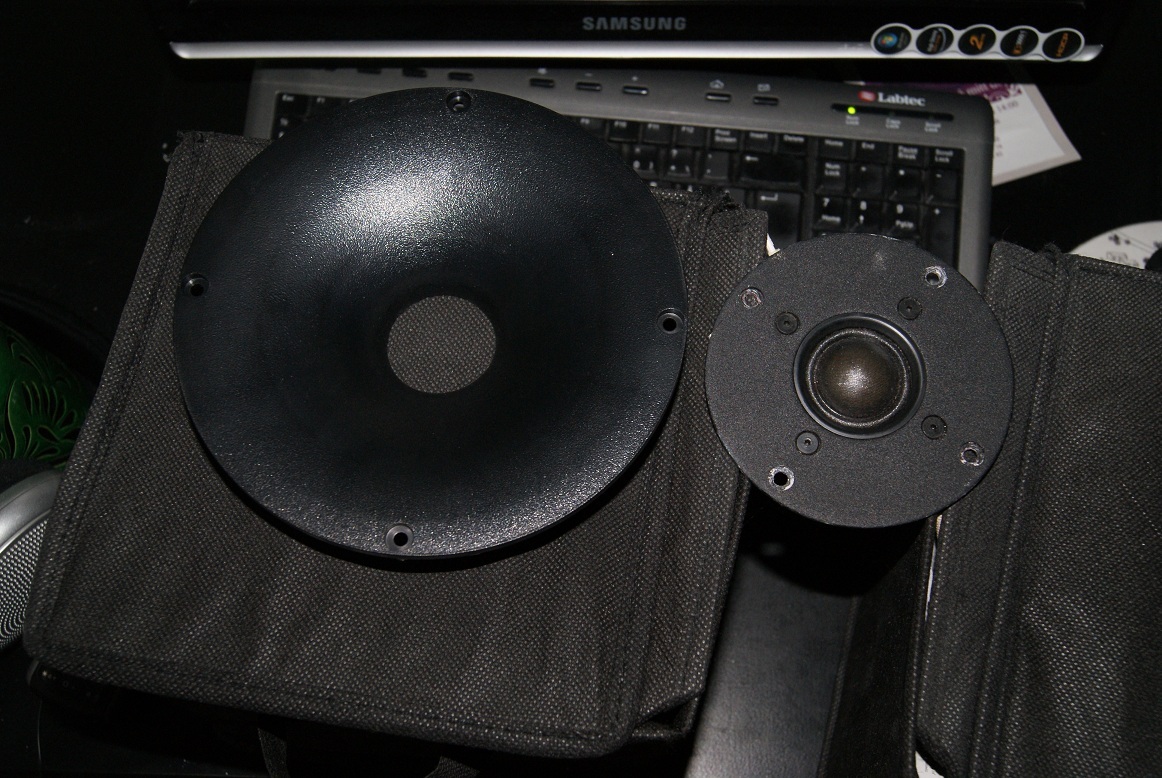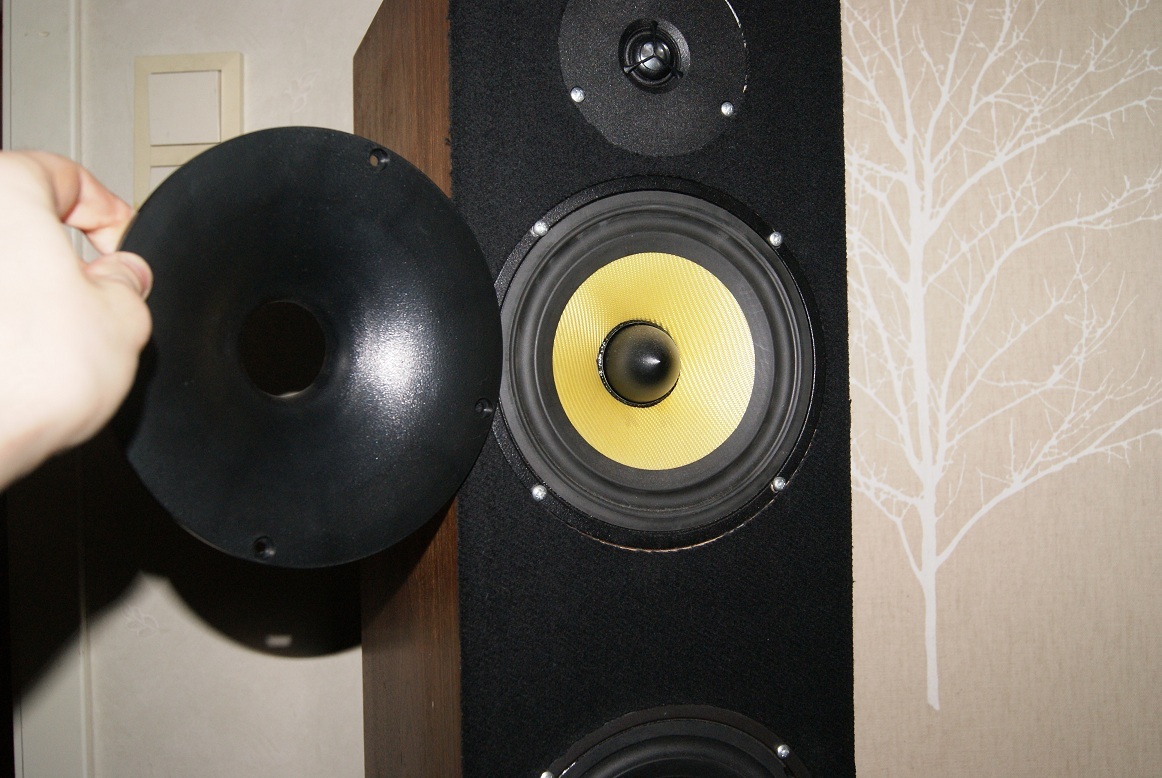
http://www.visaton.com/en/chassis_zubeh ... 0x150.html
Moderator: Redaktörer

This Waveguide was adjusted in width and length to 13 cm (e.g., AL 130 8 Ohm) and 20 cm (e.g., AL 200 8 Ohm) loudspeakers.


celef skrev:jag såg i klang+ton att visaton nu har en vågguide som passar några av deras diskanter, det var väl en fin allahjärtansdagpresent från visaton till alla vågguidesentusiaster på forumet
http://www.visaton.com/en/chassis_zubeh ... 0x150.html

celef skrev:jag tycker följande info är intressant, jag trodde nog att en vågguide dimensionerades för något specifikThis Waveguide was adjusted in width and length to 13 cm (e.g., AL 130 8 Ohm) and 20 cm (e.g., AL 200 8 Ohm) loudspeakers.
och så här sprider nämnda element
...
paa skrev:celef skrev:jag tycker följande info är intressant, jag trodde nog att en vågguide dimensionerades för något specifikThis Waveguide was adjusted in width and length to 13 cm (e.g., AL 130 8 Ohm) and 20 cm (e.g., AL 200 8 Ohm) loudspeakers.
och så här sprider nämnda element
...
Har dom mätt med baffeln fritt i luften, eftersom spridningen (i Richtdiagramme) skiljer i dom två riktningarna, trots att guiden är rund, medans baffeln är rektangulär?
Jonka_ skrev:Kan man få negativa effekter av en wg också? Alltså trots att det tillämpas på bästa möjliga sätt?
Jacro skrev:paa skrev:Jacro skrev:LeCleach and Geddes have set good starting points in the formulations for the basic waveguide, but there are next generation architectures that are being developed to address the remaining device and systems issues. - James
Could you point to one or two from that next generation?
And would you consider the DXT lens one of those, or how would you categorize that design?
Have you tried or seen other ways to fight HOM than the foam plug that Geddes has patented?
Sorry for the delay in answering... I've been busy this week.
As you know, to reduce HOMs one can either;
1) Design the waveguide in a manner that minimizes the generation of high order modes,
or,
2) Apply an absorption means to reduce HOMs that are generated by the waveguide,
or both, of course.
In the first case, if a waveguide is very carefully designed to minimize high order modes then the addition of the absorption foam does not provide a significant audible improvement.
Alternatively, when designing a waveguide, if one can gain an advantage of some desirable parameter (such as improved directivity control) by allowing high order modes to increase, then adding the absorption material can make a significant sonic improvement.
This second approach can be used to improve the DXT type structure, which is very good at directivity control, but due to its directivity control being created by using diffraction steps, it can generate more high order modes than some of the other, low diffraction types, such as Oblate Spheroid, LeCleach, or Iwata types.
A good source for DIY waveguides that are designed for low HOMs (or low Bessel modes) is Auto-Tech in Poland.
http://www.autotech.pl/pdf/audio_en.pdf
http://www.diysoundgroup.com/WaveGuides.htm
I have been working on new waveguide topologies that are based on an elliptical variation of the Oblate Spheroid.
Here is a similar approach, which is a “Quasi-Super Elliptical Oblate Spheroid”.
http://www.diysoundgroup.com/images/lar ... 0-N3_1.jpg
It is also available to DIY builders.
This device has two significant advantages over the standard Geddes type axi-symmetric Oblate Spheroid. The waveguide mouth termination is asymmetrical, so it does not exhibit the problems with on-axis high frequency dips in on axis amplitude response. It also allows closer center-to-center spacing with the woofer/mid, so vertical nulls in the response can be separated farther apart and allow a larger usable vertical listening window.
This is a good improvement over the axi-symmetric approach, but doesn’t maintain and ideal Oblate Spheroid form. While it is possibly the best overall design of the current state of the art waveguides, this one is still somewhat compromised compared to an ideal for, so that it can mount flush on a flat frontal cabinet surface.
The waveguides I have been working on follow a more precise rendition of an oblate spheroid formulation converted to elliptical form, which must be shaped in a manner that doesn’t conveniently mount to a flat surface, but offers even a further reduction in modal distortions.
(It is somewhat similar in appearance to the Iwata structures).
In terms of your question about alternatives to foam as a method of reducing HOMs, I am currently exploring different materials than the standard acoustic foam insert, as per Geddes. Ideally, to reduce HOMs more than the fundamental signal output, one would want to have a angular absorption greater than axial absorption, so I am exploring new materials that can have absorption calibrated in an angle dependent manner.
Some of the first work on minimizing this type of horn/waveguide distortion by using foam was pursued by Milton Putnam in 1980, as described in his US patent 4,381,831. In this case, the absorption foam was used mainly at the mouth of the horn and on any diffractive edges within the horn.
I can speak more to this topic if there is specific interest.
Warm regards,
- James


Nja, minsta dimensionen är ju mindre på visaton waveguiden, 150mm respektive 169mm på WG-300. Men visst är den större på bredden, den dimensionen är väl mindre kritisk i sammanhanget dock (om man bygger högtalare med större bredd än 220 mm såklart, annars får man kapa den till mindre dimension vilket ju borde fungera).celef skrev:den där wg300 är ingen höjdare, till och med taskig passform på den tänkta diskanten, visatons ser iallafall ut på bilderna att vara rejält mycket bättre, dock verkar den ju vara ännu större
DanNorman skrev:Hur passar WG300 till andra diskanter, typ seas?
Användare som besöker denna kategori: Inga registrerade användare och 17 gäster